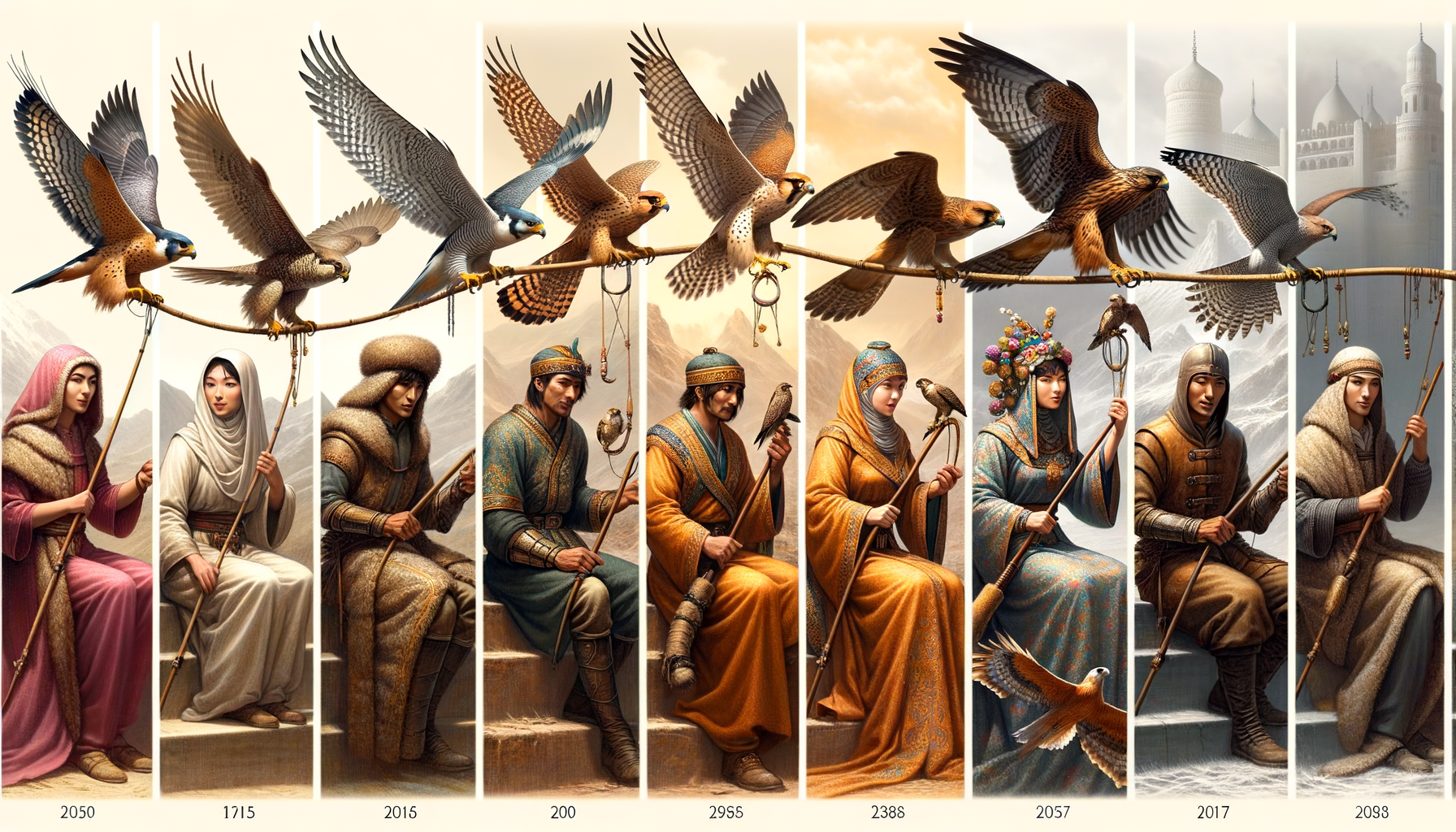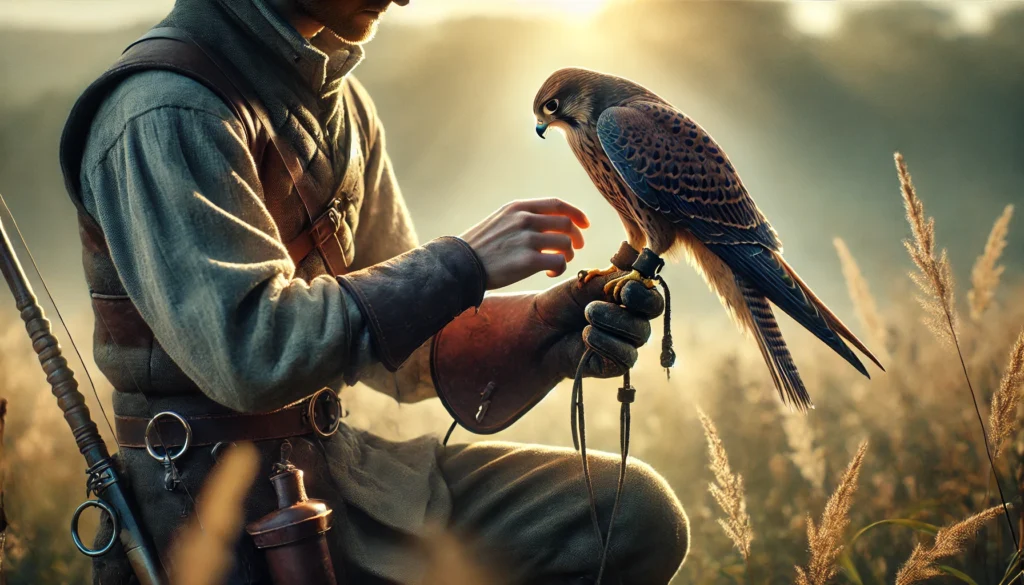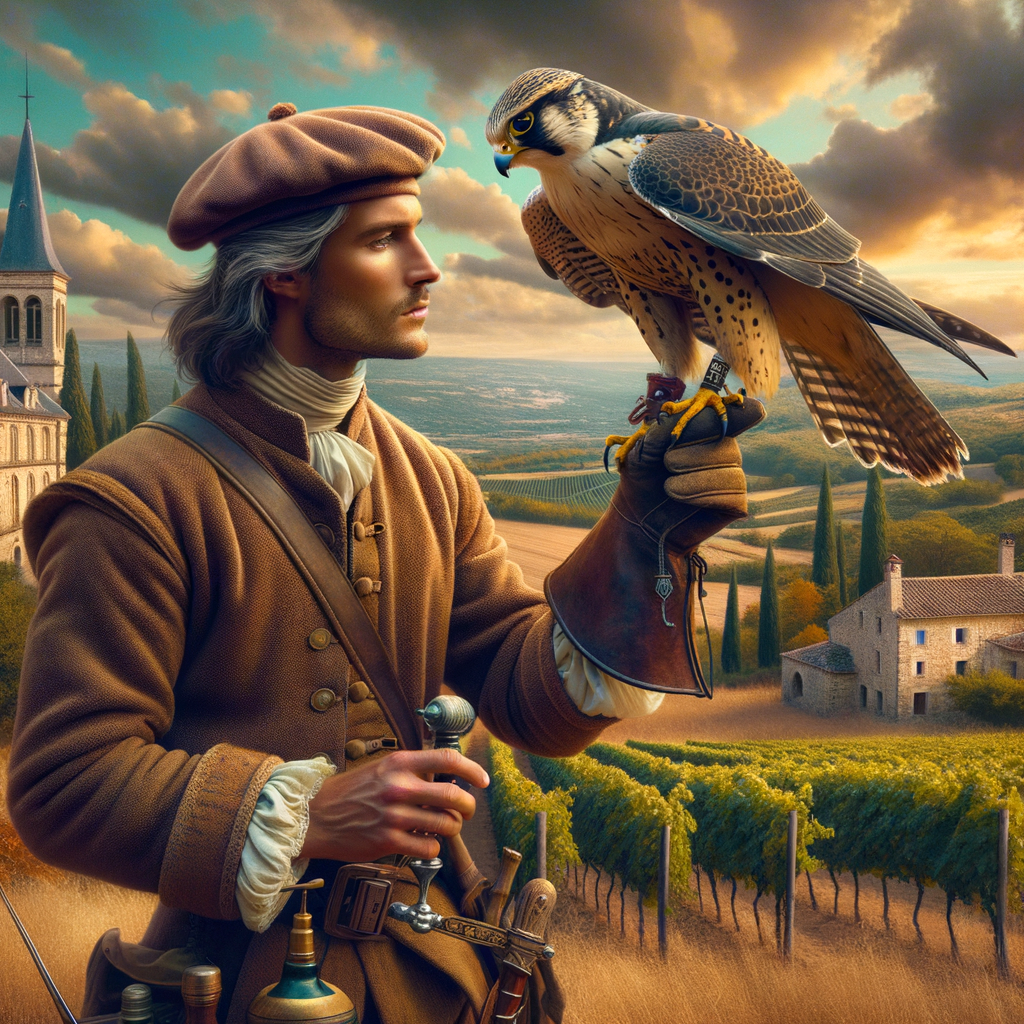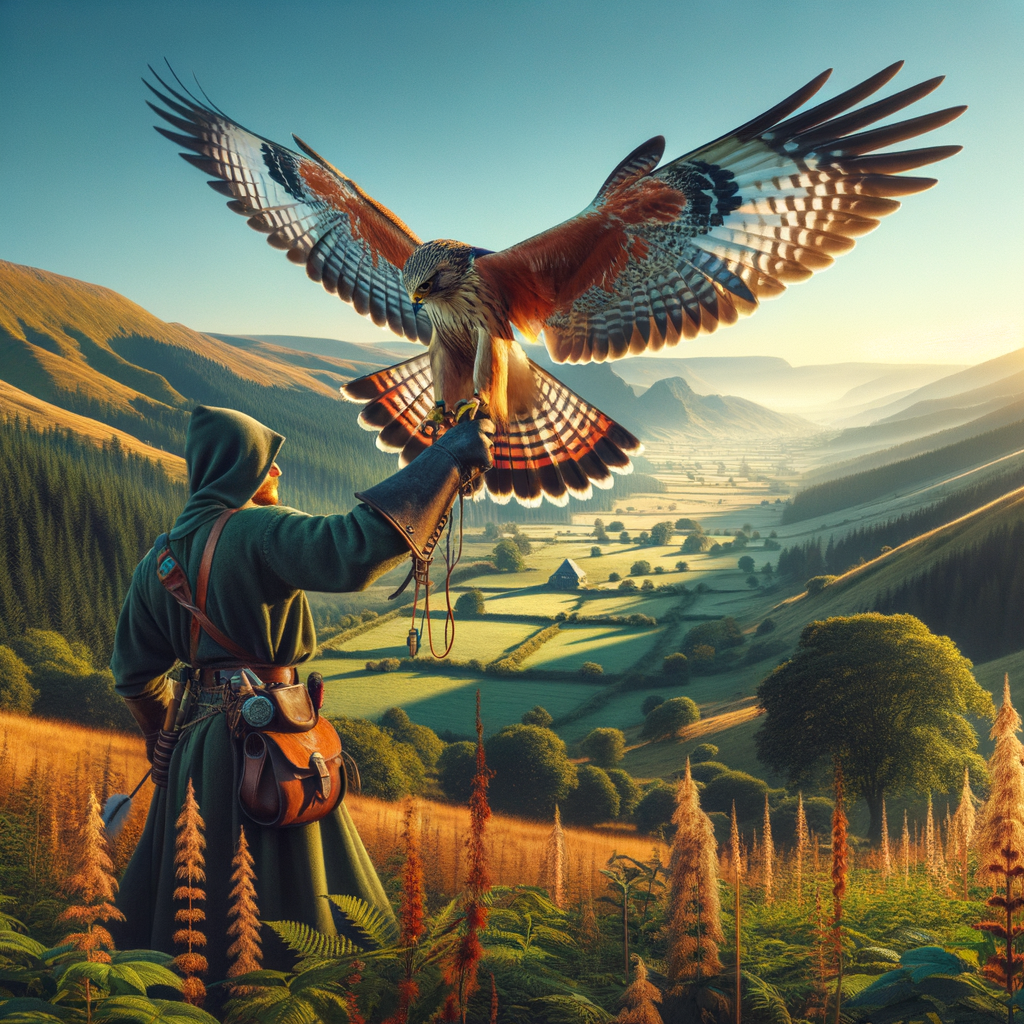Fascinating Journey of Falconry Through History
- Ancient Beginnings: Falconry dates back over 4,000 years, with early roots in Mesopotamia.
- Royal Sport: It became a favorite pastime of kings and nobles across Asia and Europe.
- Medieval Europe: Faloncry flourished during the medieval times, especially in Europe, as a symbol of status.
- Cultural Significance: Different cultures adopted falconry, shaping unique practices and traditions.
- Modern Resurgence: Today, falconry is experiencing a revival, blending ancient techniques with modern conservation efforts.
- Global Reach: From the Middle East to the Americas, falconry is practiced and celebrated around the world.
- Educational Value: Learn Falconry offers educational resources, turning this ancient art into a learning adventure for all ages.
The Tapestry of Falconry: A Journey Through Time
Imagine you’re sitting by a cozy fire in an old Irish pub, listening to stories of brave knights and their majestic companions. Just as these captivating tales deserve your full attention, so does the story of falconry. Here at Learn Falconry, we believe that to truly understand and appreciate this ancient art, you need to know its history’a history as rich and intricate as the threads of an Irish tapestry.
Falconry isn’t just about training birds to hunt; it’s a narrative that spans centuries, crossing continents and cultures. From the ancient Egyptians to medieval Europe and beyond, falconry has evolved remarkably over time. Understanding this timeline will not only enhance your appreciation for the sport but also deepen your connection with these magnificent birds.
As we unravel the historical threads of falconry, you’ll see how it has shaped human culture, formed unbreakable bonds between birds and humans, and even influenced our language and literature. Each era in falconry’s timeline adds a unique stitch to the overall tapestry, making it a vibrant and endlessly fascinating piece of history.
So grab your favorite chair and maybe a cup of hot cocoa (or a nice Irish tea), and let’s embark on this captivating journey through the ages of falconry together. Trust us, you won’t want to miss a single chapter of this incredible story.
Exploring the Fascinating Falconry Timeline
Falconry, the art of training birds of prey to hunt, has a rich and varied history spanning thousands of years across many cultures. The falconry timeline offers insight into the evolution and changing practices of this noble sport.
Ancient Origins of Falconry
Falconry can trace its roots back to the ancient Middle East, where it thrived as a hunting technique. Archaeological evidence from __ancient Egypt__ suggests that Egyptians may have practiced falconry as early as 2,000 BC. Depictions of falconry appear in Egyptian art, indicating its importance in their culture. Learn more about ancient origins of falconry.
Falconry in the Roman Empire
As we move forward on the falconry history timeline, the practice spread to the Roman Empire. The Romans admired the skill and beauty of these birds and adopted falconry for hunting and sport. Historical records from the era emphasize how falconry became a symbol of status and prestige. Discover more about falconry in the Roman Empire.
Medieval Europe and the Renaissance
In the Middle Ages, falconry flourished across Europe. This period marked significant developments in the techniques and equipment used in falconry. Royals and nobles considered it a sport, and there was a distinct social hierarchy among the types of birds owned. The evolution of falconry techniques during this time also included detailed manuals and artwork that documented the practice. Explore falconry in medieval Europe.
The Middle East and Asia
Falconry reached new heights in the medieval Middle East, particularly under the rule of the Ottomans and Mughals. They refined training methods and integrated falconry into their royal customs. In Asia, countries like Japan and Mongolia have a longstanding tradition of falconry, where it has been deeply interwoven with their cultural practices. Learn more about falconry in the Middle East and Asia.
Falconry in Indigenous Cultures
Indigenous cultures across North America and other parts of the world have used falconry as a means of survival and hunting. While their methods might differ from mainstream falconry, the principles remain deeply rooted in respect for the bird and nature. Read about falconry in indigenous cultures.
Modern Falconry
Falconry has evolved into a highly regulated activity with a focus on conservation and education. Modern falconers use advanced technology and techniques to ensure the well-being of their birds. From GPS trackers to innovative training methods, the modern era of falconry is as much about preserving the heritage as it is about pushing the boundaries of the art. Discover modern falconry and innovations in falconry equipment.
Conclusion
Falconry’s rich tapestry of history, spanning continents and millennia, exemplifies the enduring bond between humans and birds of prey. By understanding the evolution of falconry techniques and its varied cultural significance, we appreciate why falconry remains a fascinating and cherished practice.
The Fascinating Timeline of Falconry
Falconry, the ancient sport of hunting with birds of prey, is a practice that spans millennia and has evolved significantly over time. Here’s an in-depth look at some key periods and events in the history of falconry.
Ancient Origins
| Year | Event |
|---|---|
| 2000 BC | Evidence suggests that falconry may have begun in Mesopotamia. |
| 722’705 BC | An Assyrian bas-relief depicts the practice of falconry. |
| 680 BC | Chinese records describe the use of raptors for hunting. |
| 355 AD | Nihon-shoki records falconry arriving in Japan from the mainland. |
Spread and Development
| Period | Event |
|---|---|
| 2nd-4th century | The Germanic tribe of the Goths learned falconry from the Sarmatians. |
| 5th century | Falconry was introduced in Rome, spreading through Europe. |
| 500 | A Roman floor mosaic depicts a falconer and his hawk. |
| Early 7th century | Prey caught by trained dogs or falcons is considered halal in the Quran. |
Medieval and Renaissance Era
| Year | Event |
|---|---|
| 1070s | The Bayeux Tapestry shows King Harold of England with a hawk, indicating its royal significance. |
| 1240s | The treatise “De Scientia Venandi per Aves” was translated into Latin. |
| 1250 | Frederick II wrote “De arte venandi cum avibus,” a significant work on falconry. |
| 1285 | The Baz-Nama-yi Nasiri, a Persian treatise on falconry, was compiled. |
Modern Era
| Year | Event |
|---|---|
| 1600s | Dutch records show that the town of Valkenswaard in the Netherlands was almost entirely dependent on falconry. |
| 1660s | Tsar Alexis of Russia wrote a treatise on the aesthetic pleasures of falconry. |
| 1801 | James Strutt noted that ladies practiced falconry and excelled men in knowledge and exercise. |
| 1864 | The Old Hawking Club was formed in Great Britain to preserve falconry traditions. |
| 1927 | The British Falconers’ Club was founded. |
| 1934 | The first US falconry club was formed. |
| 1961 | The North American Falconers Association (NAFA) was established. |
Contemporary Practices
| Year | Event |
|---|---|
| 1973 | Falconry in Britain included captive breeding and the use of peregrine falcons for airfield protection. |
| 1986 | The Archives of Falconry was founded to preserve the heritage and history of the practice. |
| Today | Falconry is practiced worldwide, with strongholds in Britain, the United States, Central Asia, and several Persian Gulf states. |
Falconry Workshops and Presentations
- May 18, 2024: Master Falconer Brian Bradley will be giving a live bird presentation at Wave Hill, showcasing hawks, falcons, and owls in action.
- August 24, 2024: An “Introduction to Falconry” workshop will be held, limited to the first 50 registered guests, with a $50 fee per person.
Here’s a preview of what you can experience:
| Event | Date | Details |
|---|---|---|
| Live Bird Presentation by Brian Bradley | May 18, 2024 | Demonstrations of hunting skills by birds. |
| Introduction to Falconry Workshop | August 24, 2024 | Hands-on learning experience for beginners. |
Falconry Calendars
For enthusiasts and newcomers alike, the 2024 Falconry Calendar is available, featuring stunning photographs of birds of prey and in-depth information about the sport. The calendar, published in English, spans 26 pages packed with rich content and visual appeal.
| Falconry Calendar Facts | |
|---|---|
| Year | 2024 |
| Language | English |
| Number of Pages | 26 |
| Features | Photographs and sport details |
This deep dive into the history of falconry demonstrates the rich legacy and continued appreciation for this ancient art form. Whether you’re an experienced falconer or new to the sport, the timeline and upcoming events offer something for everyone.
Reflections on Falconry’s Journey Through Time
Falconry is a timeless and fascinating practice with a rich history that dates back 5,000 years. This ancient art began in regions like Mesopotamia and China for hunting and has evolved dramatically over centuries. Highlights include its introduction to Japan, the creation of Latin treatises in the Medieval period, and its spread across Europe and Asia. Important developments, such as the Bayeux Tapestry and Frederick II’s writings, showcase falconry’s significance among nobility.
In the modern era, falconry has carved niches in both scientific research and cultural heritage. The practice has witnessed the formation of various clubs and associations, ensuring its preservation and continued practice. Influential events and workshops, like the live presentation by Master Falconer Brian Bradley and the Introduction to Falconry Workshop, underscore its enduring appeal.
As we look at the broader timeline, we see how falconry remains relevant today, connecting ancient traditions with modern understanding. Whether through detailed calendars featuring majestic birds of prey or the latest genetic research unveiling the unique evolution of falcons, falconry continues to captivate and educate enthusiasts worldwide.
Embrace the legacy of falconry, whether through attending a live demonstration, participating in a workshop, or delving into its storied past. This remarkable journey through history highlights not just the sport but a profound connection between humans and these magnificent birds.



